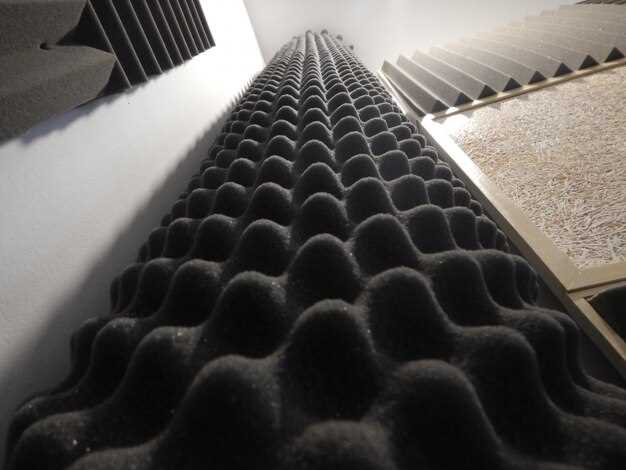
Building a custom air intake system for your vehicle can immensely enhance its performance by improving airflow to the engine. A well-designed air intake allows for better combustion, resulting in increased horsepower and torque. Moreover, a custom setup can often be less expensive than commercially available options while providing a unique aesthetic to your engine bay.
In this article, we will guide you through the process of creating your own air intake system at home. Whether you’re an automotive enthusiast or simply someone looking to optimize your vehicle’s performance, crafting a custom intake can be a rewarding project. We will cover essential tools, materials, and step-by-step instructions that will ensure you achieve the desired results efficiently and safely.
Understanding the Basics is crucial before you embark on this DIY journey. An air intake functions by funneling outside air into the engine, and its design can greatly affect airflow dynamics. Factors such as pipe diameter, length, and filter placement play a significant role in your air intake efficiency. Keeping these principles in mind will help you make informed decisions throughout the building process.
By the end of this guide, you’ll have the knowledge and confidence to construct a custom air intake that not only elevates your vehicle’s performance but also reflects your personal style. Let’s get started on this exciting project!
Choosing the Right Materials for Your Custom Air Intake
Selecting the appropriate materials for your custom air intake is crucial for optimizing performance and durability. Various materials offer different benefits, allowing you to tailor your design to specific requirements.
Aluminum is a popular choice due to its lightweight characteristics and resistance to corrosion. It can easily be molded or fabricated into complex shapes, which is ideal for achieving optimal airflow. When using aluminum, ensure the thickness is sufficient to withstand vibrations and heat without deformation.
Stainless steel is another option, known for its robustness and longevity. It provides excellent resistance to rust and can handle higher temperatures compared to aluminum. However, it is heavier and may affect overall vehicle performance if weight is a critical factor.
Plastic materials, such as high-density polyethylene (HDPE) and polyvinyl chloride (PVC), are lightweight and cost-effective. They offer good resistance to chemicals and moisture but may not handle extreme temperatures as well as metals. When using plastic, ensure it is specifically rated for automotive applications to prevent degradation over time.
Silicone hoses are often used for connections due to their flexibility and heat resistance. They can accommodate various angles and allow for easier installation while providing effective sealing. Choose high-quality silicone to ensure durability and improve airflow efficiency.
When selecting fabric materials for air filters, consider using high-flow cotton or synthetic fibers. These options promote excellent filtration while allowing for increased airflow. Ensure that whatever material you choose complies with your vehicle’s air intake system requirements.
Lastly, consider the environmental factors your custom air intake will face. If exposed to dirt, moisture, or extreme temperatures, select materials specifically designed to withstand these conditions. A well-chosen combination of materials can significantly enhance the performance and longevity of your custom air intake.
Step-by-Step Guide to Assembling the Air Intake System

Building a custom air intake system can optimize your engine’s performance. Here’s a structured guide to help you complete this project successfully.
Step 1: Gather Required Materials
Before commencing, collect all necessary materials. You will need:
- Air filter (performance type)
- Intake piping (preferably aluminum or high-quality plastic)
- Silicone couplers
- Clamps for securing couplers
- Tools: wrench set, screwdrivers, and a cutting tool
Step 2: Remove the Stock Air Intake
Begin by safely disconnecting the battery. Then, remove the stock air intake system from your vehicle. This typically involves unfastening clamps and disconnecting sensors.
Step 3: Plan the New Layout
Next, outline how you want your custom intake to be routed. Consider factors such as the location of the air filter and how it will connect to the throttle body. Maintain a smooth path for airflow.
Step 4: Cut the Intake Piping
Based on your layout, measure and cut the intake piping accordingly. Ensure the cuts are clean to avoid any airflow restrictions. Use a cutting tool suitable for the material of your piping.
Step 5: Attach the Air Filter
Secure the air filter to one end of the intake piping using a silicone coupler and clamps. Make sure it is tightened adequately to prevent any air leaks and ensure a tight fit.
Step 6: Connect the Piping to the Throttle Body
Align the other end of the intake piping with the throttle body. Use a silicone coupler for this connection as well. Secure it using clamps to ensure it remains tightly connected without any air leaks.
Step 7: Install Sensors and Components
If your vehicle has sensors such as Mass Air Flow (MAF) or others, reinstall them in their appropriate locations. Ensure that all electrical connections are secure and properly insulated.
Step 8: Final Inspection
Once you have assembled the entire system, conduct a thorough inspection. Check all connections, clamps, and ensure there are no loose components. Ensure your routing does not interfere with any moving parts or heat sources.
Step 9: Reconnect the Battery
After confirming everything is secure and in place, reconnect the battery. This step is crucial to restore power to your vehicle’s systems.
Step 10: Test the System
Finally, start the engine and monitor its performance. Listen for any unusual sounds that may indicate loose fittings or air leaks. Take your vehicle for a test drive to evaluate the improvements in performance.
By following these steps, you can successfully assemble a custom air intake system that enhances engine efficiency and responsiveness.
Tuning Your Vehicle After Installing a Custom Air Intake

After successfully installing a custom air intake, it’s crucial to tune your vehicle to maximize its performance. A custom air intake improves airflow, but without proper tuning, your engine may not run optimally, potentially leading to inefficiencies or running too lean.
The first step in tuning is to assess your vehicle’s air-fuel ratio (AFR). A wideband O2 sensor is essential for this process, as it provides real-time data on how much air and fuel your engine is consuming. Monitor the AFR during various driving conditions to ensure it stays within the optimal range, typically around 14.7:1 for gasoline engines.
If you observe a lean condition (higher AFR), the engine may struggle, leading to potential damage. In such cases, consider adjusting the fuel mapping. This can be done with an ECU flash or tuning using aftermarket software. Make sure to introduce additional fuel to compensate for the increased airflow from the new intake.
On the other hand, if the vehicle runs too rich (lower AFR), reducing fuel delivery will help restore balance. Again, adjustments can be made via ECU tuning. It’s recommended to consult an experienced tuner or use specific tuning tools for your vehicle model to achieve the best results.
Additionally, dyno tuning is highly beneficial after air intake installation. A dynamometer provides accurate measurements of horsepower and torque, allowing you to see the impact of the air intake on your engine’s performance. Tuning on a dyno can help fine-tune the adjustments to your fuel maps, ensuring your vehicle runs efficiently at all times.
Don’t forget to update your engine’s ignition timing after installation. Improved airflow often allows for more aggressive timing curves, enhancing performance. Timing adjustments can usually be made with tuning software or by a professional tuner familiar with your specific model.
Finally, keep monitoring your engine after tuning and regularly check for codes or abnormal behavior. A custom air intake can reveal underlying issues that may not have been apparent before its installation. Regular checks and adjustments will ensure that your vehicle remains in peak condition.
